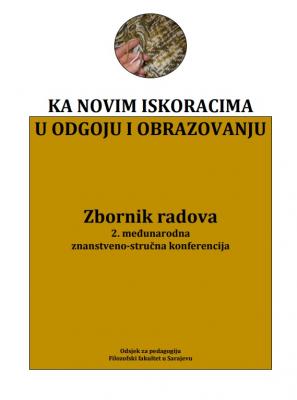INTEGRIRANI MODEL EVALUACIJE
AN INTEGRATED MODEL OF EVALUATION
Author(s): Irma Čehić, Lejla Silajdžić, Sanela Merjem RustempašićSubject(s): Labor relations, Higher Education , History of Education, Pedagogy
Published by: Filozofski fakultet Univerziteta u Sarajevu
Keywords: evaluation; portfolio; final exam;
Summary/Abstract: Written exams began to be applied in the Old China in the second century. The most important advantage of exams is that they evaluate students’ knowledge in a relatively objective manner, i.e. they provide the possibility for everyone to answer the same questions at the same time and under relatively similar conditions. But since its first application up to nowadays, the final exam, as a form of student assessment, has had many disadvantages. It mainly gives the opportunity to “capture” the current situation, but not the overall long-term learning outcomes. For these reasons, we want to update this topic again and present a different model of evaluation of students’ achievements, as verified in practice. The model is designed in a way that students will have their own development portfolios created at the end of the year. The concept of a portfolio integrates different subjects within one study year, so that the contents of different subjects are better interlinked and in order to achieve a positive transfer of knowledge. The evaluation of tasks within the portfolio is formative and diagnostic, as it is expected from students to correct their own work based on the feedback they get. The final activity of the process is a student conference that enables students to improve their professional competencies. The purpose of this model of evaluation is to motivate students to develop an explorative and critical attitude towards teaching contents. Furthermore, a portfolio designed like this also enables students to prepare themselves for the labor market and to take on their professional responsibilities.
Journal: Zbornik radova Odsjeka za pedagogiju
- Issue Year: 2/2018
- Issue No: 2
- Page Range: 84-93
- Page Count: 10
- Language: Bosnian

